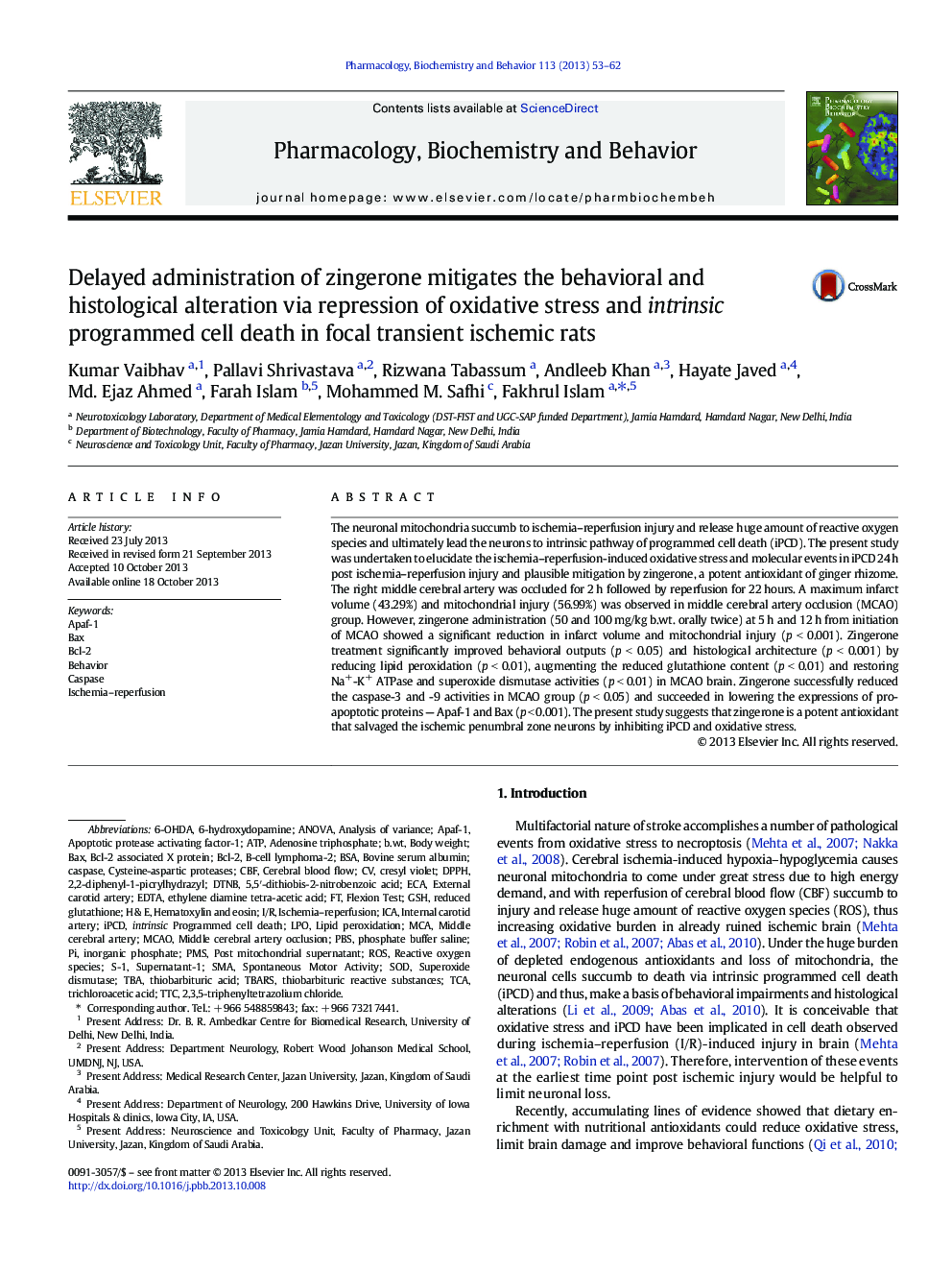| Article ID | Journal | Published Year | Pages | File Type |
|---|---|---|---|---|
| 2012988 | Pharmacology Biochemistry and Behavior | 2013 | 10 Pages |
•Zingerone protects histological and behavioral alterations in MCAO rats•Zingerone, a potent free radical scavenger, mitigates oxidative stress in MCAO rats•Zingerone protects ischemic brain by suppressing Bax and Apaf-1 expressions and caspases-3 and -9 activities
The neuronal mitochondria succumb to ischemia–reperfusion injury and release huge amount of reactive oxygen species and ultimately lead the neurons to intrinsic pathway of programmed cell death (iPCD). The present study was undertaken to elucidate the ischemia–reperfusion-induced oxidative stress and molecular events in iPCD 24 h post ischemia–reperfusion injury and plausible mitigation by zingerone, a potent antioxidant of ginger rhizome. The right middle cerebral artery was occluded for 2 h followed by reperfusion for 22 hours. A maximum infarct volume (43.29%) and mitochondrial injury (56.99%) was observed in middle cerebral artery occlusion (MCAO) group. However, zingerone administration (50 and 100 mg/kg b.wt. orally twice) at 5 h and 12 h from initiation of MCAO showed a significant reduction in infarct volume and mitochondrial injury (p < 0.001). Zingerone treatment significantly improved behavioral outputs (p < 0.05) and histological architecture (p < 0.001) by reducing lipid peroxidation (p < 0.01), augmenting the reduced glutathione content (p < 0.01) and restoring Na+-K+ ATPase and superoxide dismutase activities (p < 0.01) in MCAO brain. Zingerone successfully reduced the caspase-3 and -9 activities in MCAO group (p < 0.05) and succeeded in lowering the expressions of pro-apoptotic proteins — Apaf-1 and Bax (p < 0.001). The present study suggests that zingerone is a potent antioxidant that salvaged the ischemic penumbral zone neurons by inhibiting iPCD and oxidative stress.
